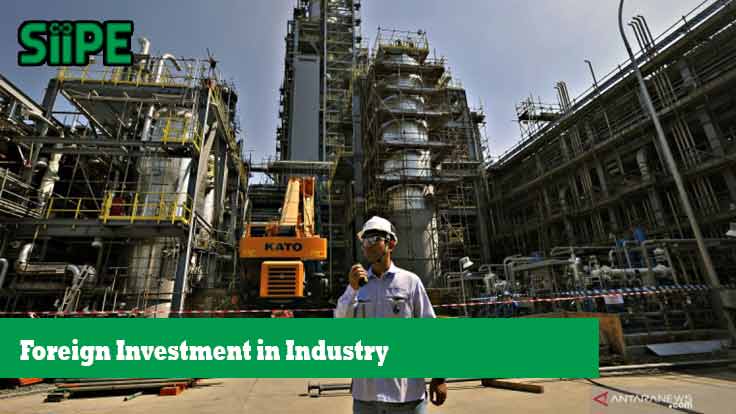Foreign investment in industry has become a major driver of global economic growth. Across both developed and emerging economies, foreign direct investment (FDI) fuels innovation, creates jobs, and enhances competitiveness. In the industrial sector, foreign investment provides access to capital, advanced technologies, and global supply chains. At the same time, host countries benefit from industrial diversification and improved infrastructure.
This article explores the importance of foreign investment in industry, key opportunities it brings, challenges faced by host countries, and strategies to maximize its potential for sustainable growth.
The Role of Foreign Investment in Industrial Growth
Foreign investment is more than just capital injection; it often involves knowledge transfer, new production methods, and access to global markets. In industries such as manufacturing, energy, logistics, and technology, foreign investment helps local firms scale faster and compete internationally.
For example:
-
Technology transfer: Advanced machinery and digital tools from multinational firms raise productivity.
-
Skill development: Local workers receive training and exposure to global practices.
-
Supply chain integration: Industries become part of international trade networks, increasing exports.
Opportunities from Foreign Investment in Industry
2.1 Boosting Industrial Infrastructure
FDI often brings large-scale infrastructure projects such as modern industrial estates, logistics hubs, and green energy facilities. These projects not only serve foreign investors but also create spillover benefits for local businesses.
2.2 Job Creation and Workforce Development
Foreign industries create direct jobs in manufacturing plants, warehouses, and offices. Indirectly, they stimulate local services, transportation, and supply chains, further boosting employment.
2.3 Access to Global Markets
When foreign companies invest in local industries, they often integrate the host country into their international networks. This opens export opportunities and reduces dependence on domestic markets.
2.4 Innovation and R&D Growth
Many foreign firms establish research centers in host countries, encouraging innovation in automation, green energy, and smart manufacturing. This helps industries stay competitive in the era of Industry 4.0.
Challenges in Attracting and Managing Foreign Investment
3.1 Regulatory Barriers
Complicated licensing procedures, inconsistent tax policies, or weak intellectual property rights can discourage investors.
3.2 Political and Economic Stability
Investors are wary of unstable political environments, currency fluctuations, or high inflation rates. Stable governance is key to attracting long-term industrial investment.
3.3 Environmental and Social Concerns
Industries driven by foreign investors may face criticism for pollution, land use conflicts, or poor labor conditions if not regulated properly. Host countries must balance economic growth with sustainability.
3.4 Overdependence on Foreign Capital
While FDI is beneficial, excessive reliance on foreign investors may reduce domestic control over key industries. Developing strong local industries remains essential.
Strategies to Maximize Benefits of Foreign Investment
4.1 Investment-Friendly Policies
Governments can encourage FDI through tax incentives, simplified regulations, and transparent legal systems.
4.2 Building Skilled Human Capital
Developing a skilled workforce through vocational training and higher education ensures local talent can meet industrial needs.
4.3 Promoting Eco-Friendly Industrial Practices
Encouraging green technologies and renewable energy in foreign-led industries prevents long-term environmental damage.
4.4 Strengthening Local Supply Chains
Policies that connect foreign investors with local small and medium enterprises (SMEs) ensure broader economic benefits.
Case Studies: Successful Foreign Investment in Industry
-
Vietnam: Rapid industrial growth fueled by foreign investment in electronics and textiles, positioning the country as a global manufacturing hub.
-
Indonesia: FDI in mining and industrial estates has accelerated infrastructure development and export capacity.
-
Germany: As a developed economy, Germany still benefits from foreign investment in advanced manufacturing and renewable energy.
Future Outlook of Foreign Investment in Industry
The future of foreign investment in industry will be shaped by digital transformation, sustainability, and geopolitical shifts. Key trends include:
-
Green Industry Growth: Investors are increasingly prioritizing eco-friendly industrial estates.
-
Digital Manufacturing: Adoption of automation, AI, and smart factories is a major attraction for investors.
-
Regional Cooperation: Trade blocs such as ASEAN and the EU encourage industrial integration and cross-border investment.
Foreign investment in industry remains a powerful engine for growth, innovation, and global integration. While challenges such as regulation and environmental impact must be managed, the opportunities for job creation, technology transfer, and sustainable development are immense. For both emerging and advanced economies, balancing openness to foreign capital with strong domestic industrial policies is key to long-term prosperity.











